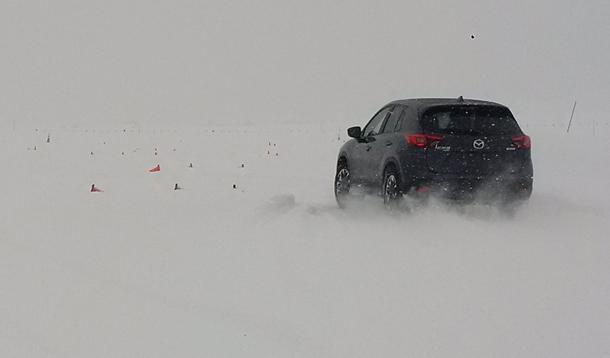
Many drivers think that an all-wheel drive (AWD) system is better but few can say why or how. Manufacturers have often emphasized when their vehicles are AWD while front-wheel drive or rear-wheel drive rarely gets mentioned. Subaru, long known for its AWD system, was a niche in the industry when AWD wasn’t common with other manufacturers. Nowadays, most manufacturers have some vehicles in their fleet with AWD technology.
So what is AWD anyway and what are its advantages over the conventional front-wheel/rear-wheel drive systems? It’s important to know that when we speak of these systems, we’re talking about power distribution to each wheel. Front-wheel drive (FWD) has power from the transmission going only to the 2 front wheels. In essence, the two front wheels are pulling the two rear wheels. In a rear-wheel drive (RWD) system, power is going to the two wheels in the back and they are pushing the vehicle. Ever been skating? If you only ever use one leg to push (giving you power), while the other foot always stays on the ice gliding then you are a One-Leg-Drive!
AWD has power from the transmission going to each wheel (all wheels) so the vehicle has an easier time getting out of challenging terrain compared to FWD/RWD. In the winter, an AWD will be able to get out of snow and slush easier. If you’re stuck in a mud patch, the AWD will be able to handle getting you out better than a FWD/RWD.
Generally speaking, AWD systems cost more (as this is an additional system that you’re paying for, there are extra parts involved), use more fuel, and you have added maintenance costs. Nothing significant, but they are costs nonetheless.
Some manufacturers have systems that are ‘partial’ AWD. They’ll call them different names for marketing reasons but essentially, they distribute power to 2 wheels during normal drives and when the computer senses that more traction is needed, it will then send power to the remaining wheels. That way, you’re not using so much fuel and power when it’s not needed.
If I was comparing an AWD system to the FWD/RWD, hands down the AWD would perform better in terms of driver control and getting through challenging terrain. Having said that, it doesn’t mean that FWD/RWD vehicles are bad. It really comes down to what you need.
Are the costs worth the benefit of better traction and control? Maybe. It depends on how many times you think you’ll need that system to work. AWD systems aren’t popular in the southern states (California, Florida, etc) for obvious reasons. In our Canadian climate? It’s something to consider. Do you have the option to not drive on very snowy days? Do you live in rural areas where the terrain varies? Or are you in a city with lots of hills?
As time goes on, advances have been made to AWD systems. For example, Mazda has entered the game with its i-ACTIV AWD system. One thing I love is when manufacturers take a traditional system and enhance it. In my opinion vehicle systems (engine, transmission, brakes, etc) have pretty much been established and proven over the years. The only thing left to do is to fine-tune these systems. Mazda has introduced an intuitive and predictive AWD technology – it basically uses data given to the computer such as internal and external temperatures, windshield wiper use, vertical position sensors, steering wheel input, etc and anticipates when and how much power to send to the wheels before you hit that patch of slippery road. The advantage is that there is little to no lag when the AWD system kicks in, the idea is to get the power distribution to feel seamless for the driver. That way, the driver experiences consistent control of the vehicle. I drove the Mazda CX-5 back-to-back with the Subaru Forester and Honda CR-V, and you know what? All had winter tires, all had AWD but the Mazda i-ACTIV AWD system tracked much better than the other two. I was very surprised, especially with the Subaru because, as I had mentioned, they are traditionally known for their AWD system. For me, it showcased the potential of an intuitive and predictive AWD system.

One last thing you should know about AWD systems: they don’t replace the use of winter tires! By now you’ll know that drive systems (AWD, FWD, RWD) are exactly that… they DRIVE the vehicle. Winter tires are about traction and stopping ability. In fact, let’s leave winter tires aside for now. If I pair up an AWD vehicle with poor all-season tires, I’d wager that my FWD with good all-season tires will perform better. So tires work hand-in-hand with your vehicle’s technology. No sense in sending power to tires that can’t grip the road.

This season if you’re in the market for another ride, give weight to the cost and benefits of an AWD vehicle!
![]() Have a long-term expectation for your ride? Find out how to maintain it right! When’s the last time you checked your headrest position? Don’t be one of the 86% who get it wrong.
Have a long-term expectation for your ride? Find out how to maintain it right! When’s the last time you checked your headrest position? Don’t be one of the 86% who get it wrong.